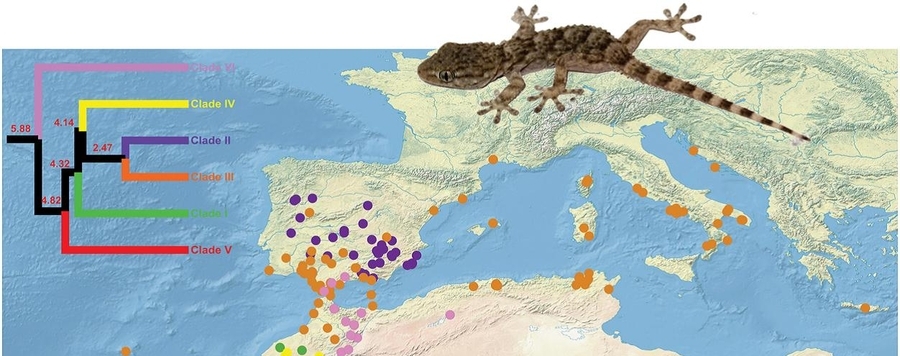
Niche Evolution in Tarentola mauritanica (Gekkota)
The quantification of realized niche overlap and the integration of species distribution models (SDMs) with calibrated phylogenies to study niche evolution are becoming not only powerful tools to understand peciation events, but can also be used as proxies regarding the delimitation of cryptic species. We applied these techniques in order to unravel how the fundamental niche evolved during cladogenesis within the Tarentola mauritanica species-complex. Our results suggest that diversification within this complex, during the Miocene and Pleistocene, is associated with both niche divergence and niche conservatism, with a pattern that varies depending on whether the variables involved are related to the mean or seasonality
of temperature and humidity. Moreover, climatic variables related to humidity and temperature seasonality were involved in the niche shift and genetic diversification of the European/North African clade during the Pleistocene and in its maintenance in a fundamental niche distinct from that of the remaining members of the group. This study further highlights the need for a taxonomic revision of the T. mauritanica species-complex.






